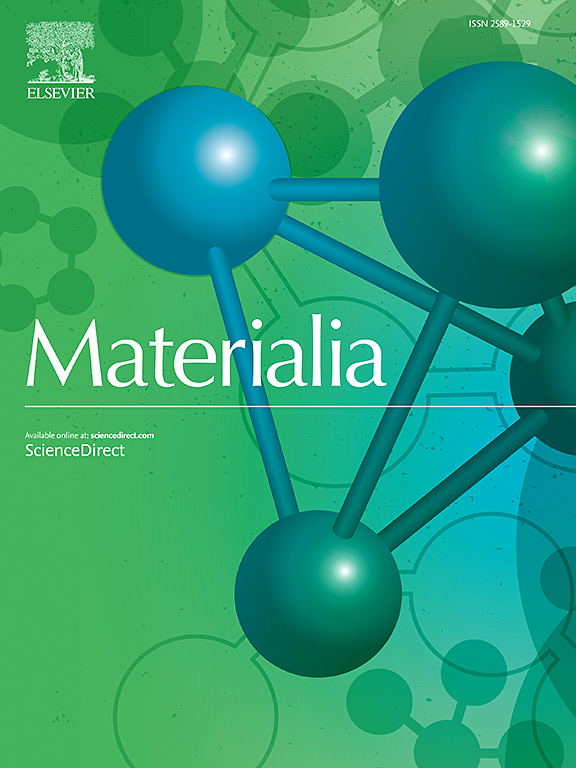用理论模拟验证玻璃体B2O3玻璃中的博罗索环
IF 2.9
Q2 MATERIALS SCIENCE, MULTIDISCIPLINARY
引用次数: 0
摘要
硼酸玻璃(v-B2O3)中硼砂环的数量由于实验和模拟的几个相互矛盾的结果仍然存在争议。为了解决这个问题,我们使用经典和从头算分子动力学(MD)模拟相结合的方法研究了v-B2O3的结构模型。在经典的动力学模拟中,利用解析力场和机器学习力场(MLFF)构建了多个含有不同数量硼砂环的v-B2O3模型,然后利用密度泛函理论进行从头算动力学和能量最小化。这些不同的结构与现有的实验数据进行了比较,如中子和x射线衍射图,核磁共振(NMR)和拉曼光谱。因此,只有硼氧环中硼原子含量超过70%的模型才能再现这些实验数据,这证实了v-B2O3中应该存在各种硼氧环。具体来说,即使在结构充分松弛的情况下,含有较少硼砂环的v-B2O3模型的核磁共振和拉曼光谱也没有显示出实验观察到的特征光谱。因此,我们得出结论,硼氧环内硼原子的占比应超过70%,甚至可能高达80%。最后,我们利用本工作获得的包含一定量博罗索环的结构数据更新了MLFF。结果表明,精确的MLFF产生一定数量的硼罗索环,而要产生合理数量的硼罗索环,需要与实验条件相当的淬火速率。本文章由计算机程序翻译,如有差异,请以英文原文为准。

Certification of boroxol ring population in vitreous B2O3 glass using theoretical simulations
Population of boroxol rings in vitreous borate glass (v-BO) is still debated due to several conflicting results from experiments and simulations. To address this issue, we examined structural models of v-BO using a combination of classical and molecular dynamics (MD) simulations. For the classical MD simulations, both analytical and machine-learning force fields (MLFF) were utilized to construct multiple v-BO models with varying amounts of boroxol rings, followed by MD and energy minimization using density functional theory. These diverse structures were compared with available experimental data, such as neutron and X-ray diffraction patterns, nuclear magnetic resonance (NMR), and Raman spectroscopy. Consequently, only models with more than 70% of boron atoms within boroxol rings reproduced these experimental data, confirming that a various boroxol rings should exist in v-BO. Specifically, NMR and Raman spectra of the v-BO models with fewer boroxol rings did not show the characteristic spectra observed experimentally even when their structures were sufficiently relaxed. We therefore conclude that the population of boron atoms within boroxol rings should be more than 70%, and could be as high as 80%. Finally, we updated the MLFF using the structural data that included a certain amount of boroxol rings obtained through this work. Consequently, it was demonstrated that accurate MLFF produces a certain amount of boroxol rings, while a quenching rate comparable to experimental condition is required to generate a reasonable population of boroxol rings.
求助全文
通过发布文献求助,成功后即可免费获取论文全文。
去求助
来源期刊

Materialia
MATERIALS SCIENCE, MULTIDISCIPLINARY-
CiteScore
6.40
自引率
2.90%
发文量
345
审稿时长
36 days
期刊介绍:
Materialia is a multidisciplinary journal of materials science and engineering that publishes original peer-reviewed research articles. Articles in Materialia advance the understanding of the relationship between processing, structure, property, and function of materials.
Materialia publishes full-length research articles, review articles, and letters (short communications). In addition to receiving direct submissions, Materialia also accepts transfers from Acta Materialia, Inc. partner journals. Materialia offers authors the choice to publish on an open access model (with author fee), or on a subscription model (with no author fee).
 求助内容:
求助内容: 应助结果提醒方式:
应助结果提醒方式:


